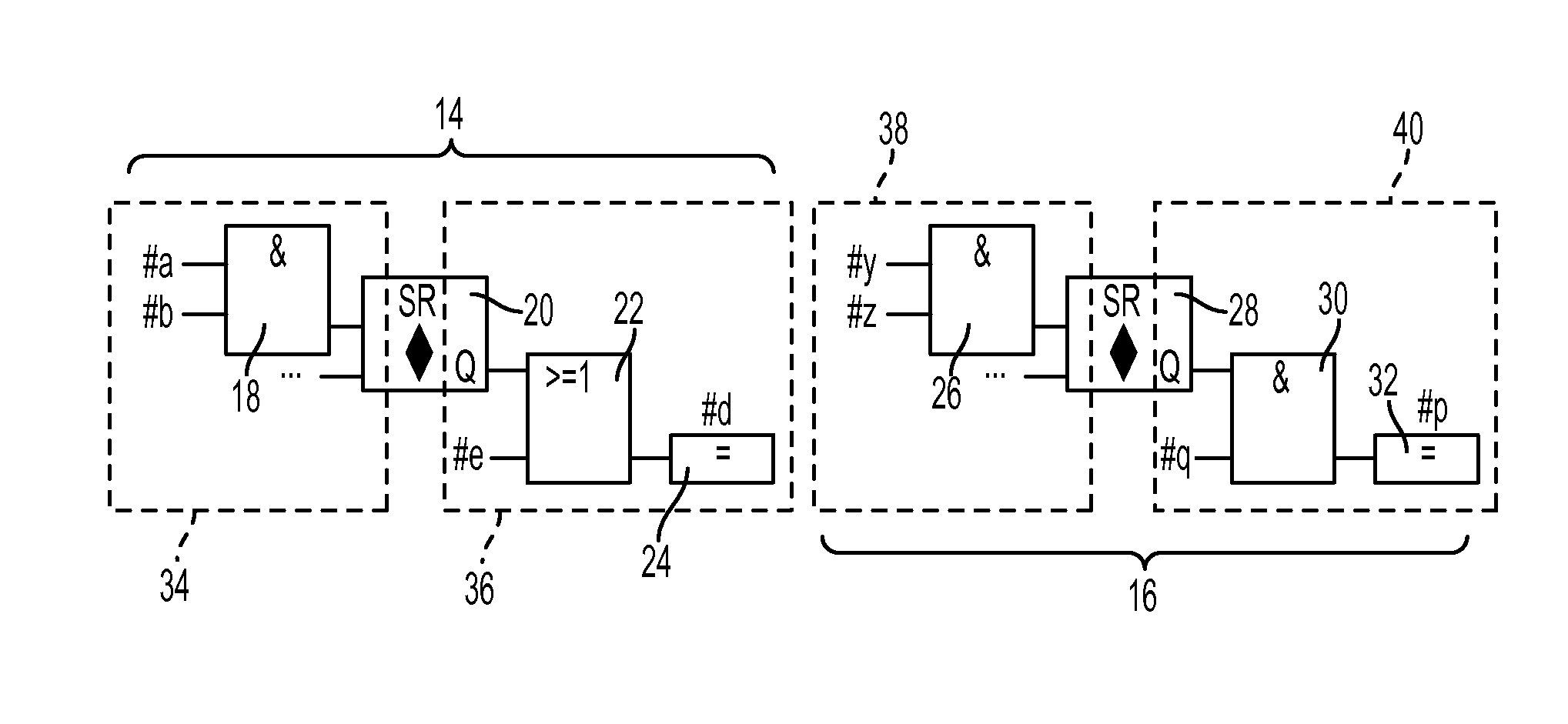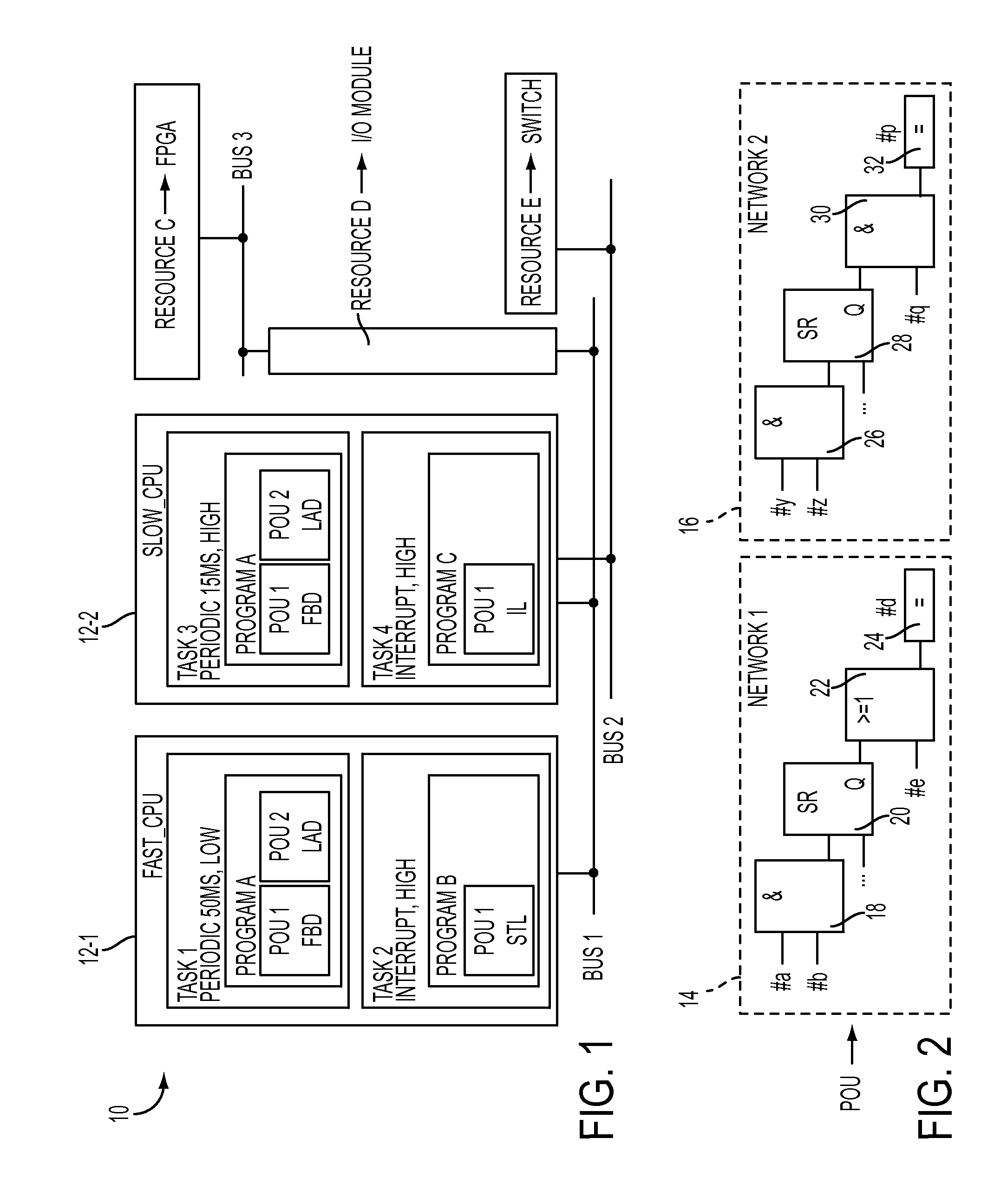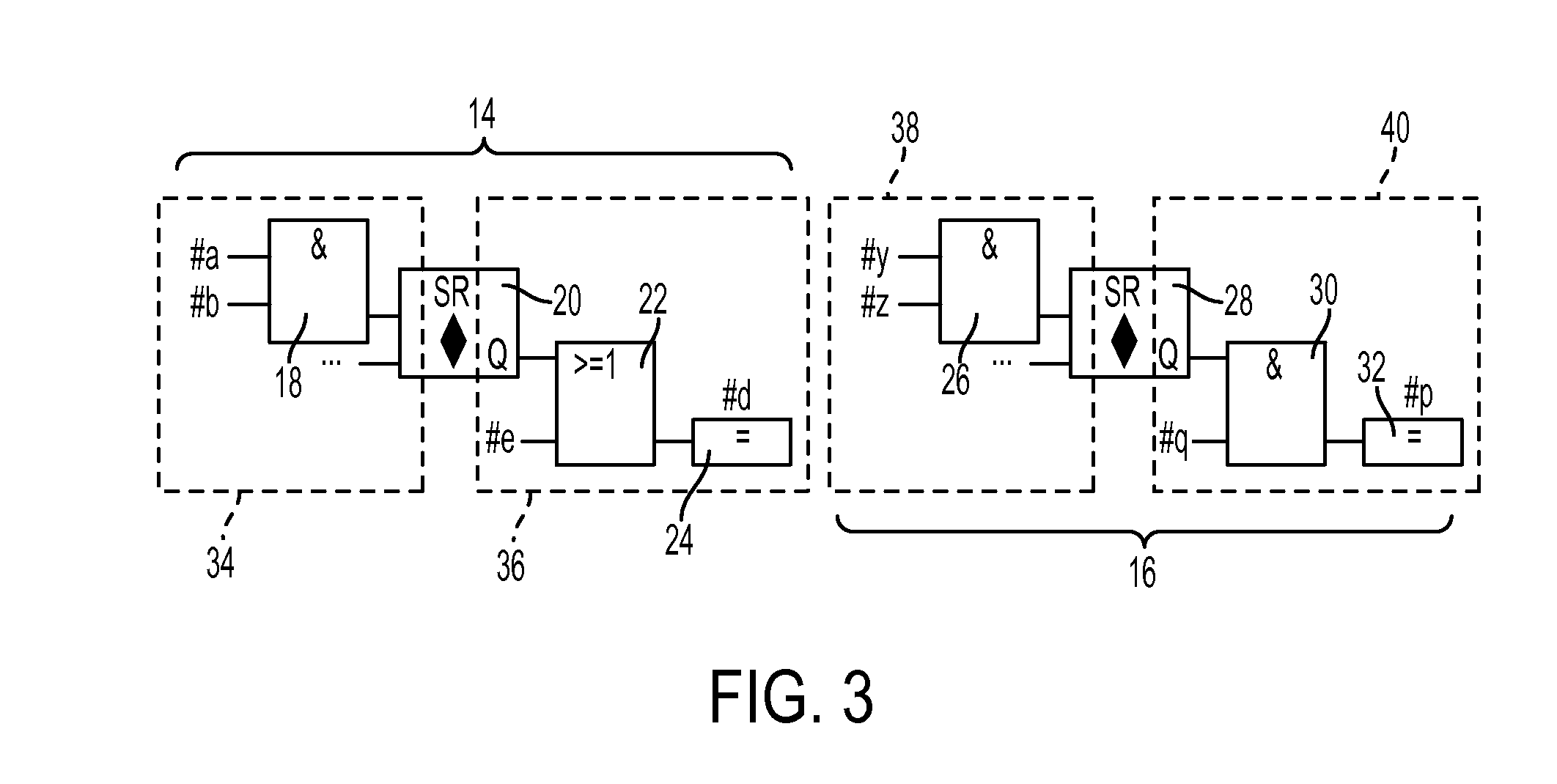Parallelization of PLC programs for operation in multi-processor environments
a multi-processor environment and parallelization technology, applied in the direction of electrical programme control, program control, instruments, etc., can solve the problems of unbalanced parallelism across multiple processors, unoptimized arrangement, and limited understanding of how to compile iec 61131-3 languages for execution in multi-core processors, so as to minimize processing time, maximize cpu utilization, and minimize power consumption
- Summary
- Abstract
- Description
- Claims
- Application Information
AI Technical Summary
Benefits of technology
Problems solved by technology
Method used
Image
Examples
Embodiment Construction
[0031]As will be described in detail hereinbelow, the present invention is directed to a method for automatically identifying and extracting parallelism from PLC programs written in high-level languages, the extracted parallelism preferably from both dataflow analysis and functional analysis, although the functional analysis of the present invention can indeed be performed independent of a dataflow analysis. These separate program fragments (tasks or sub-tasks) can then be assigned to different resources (such as different cores in a multi-core processor) and provide a well-balanced, efficient utilization of today's parallel processing environment.
[0032]Indeed, a significant aspect of the present invention is the realization that the functional information expressed in the high-level languages associated with IEC 61131-3 (hereinafter simply referred to as “PLC programs” for the sake of clarity and simplicity) can serve as a foundation for uncovering a significant amount of paralleli...
PUM
 Login to View More
Login to View More Abstract
Description
Claims
Application Information
 Login to View More
Login to View More - R&D
- Intellectual Property
- Life Sciences
- Materials
- Tech Scout
- Unparalleled Data Quality
- Higher Quality Content
- 60% Fewer Hallucinations
Browse by: Latest US Patents, China's latest patents, Technical Efficacy Thesaurus, Application Domain, Technology Topic, Popular Technical Reports.
© 2025 PatSnap. All rights reserved.Legal|Privacy policy|Modern Slavery Act Transparency Statement|Sitemap|About US| Contact US: help@patsnap.com



